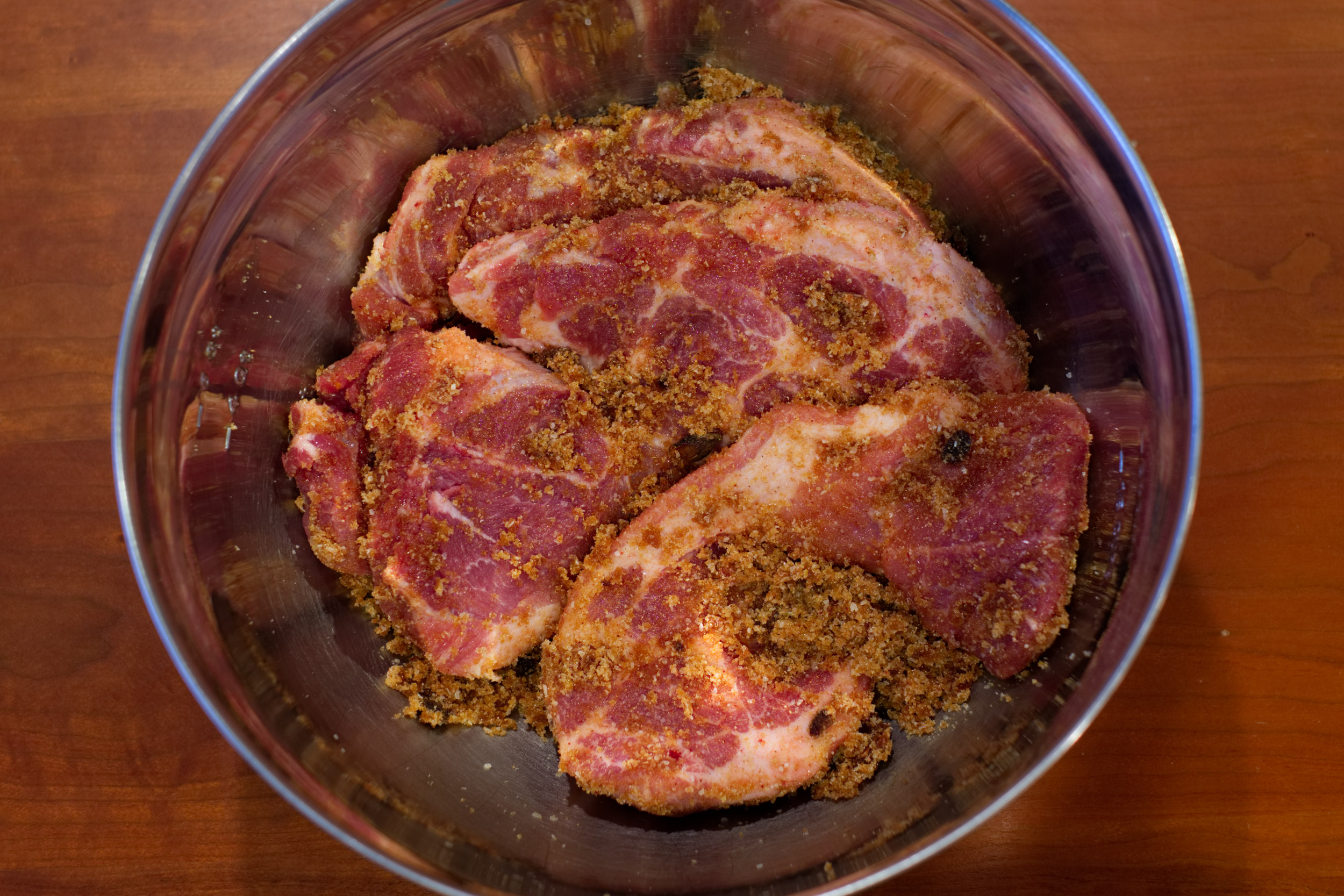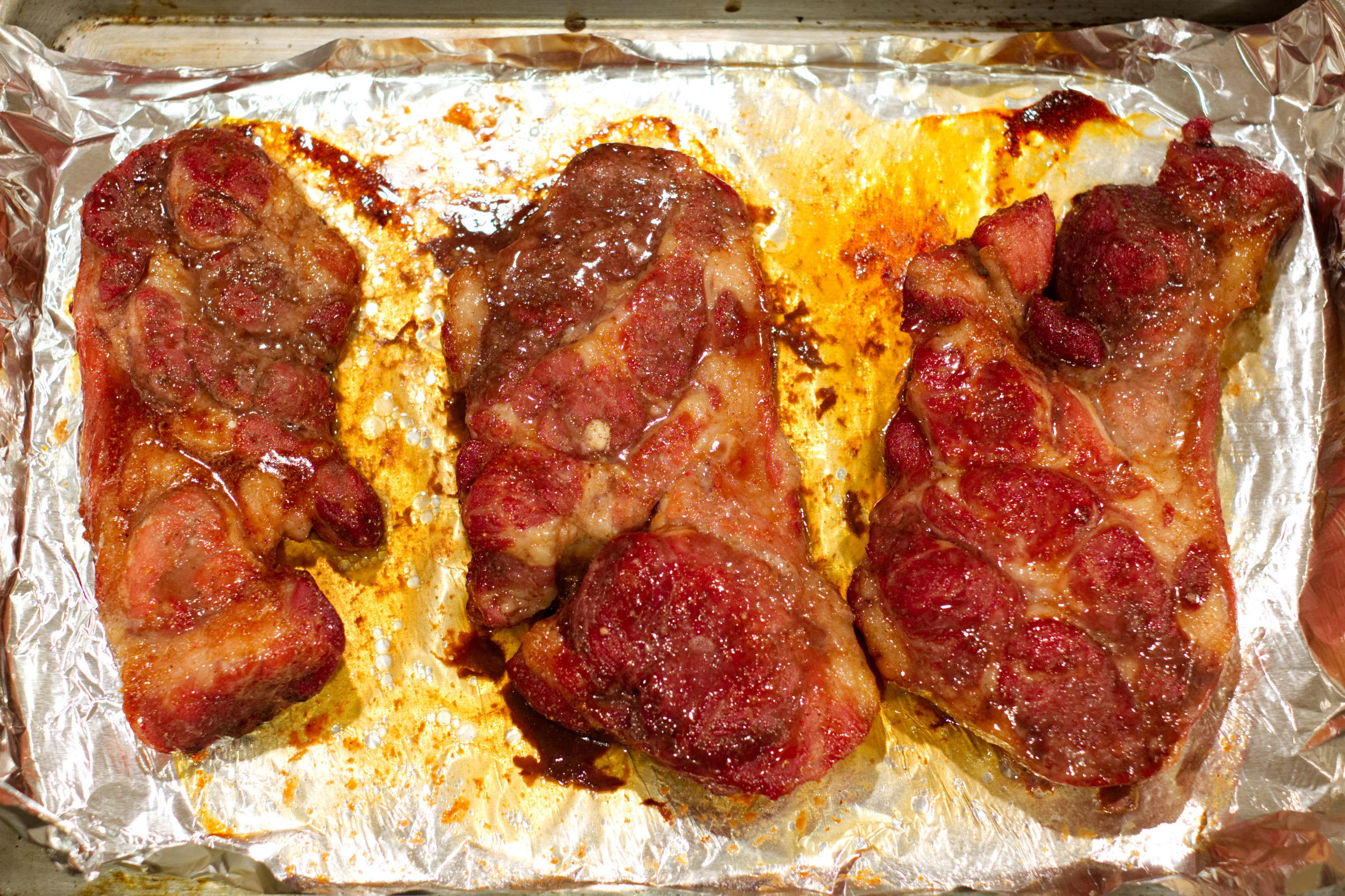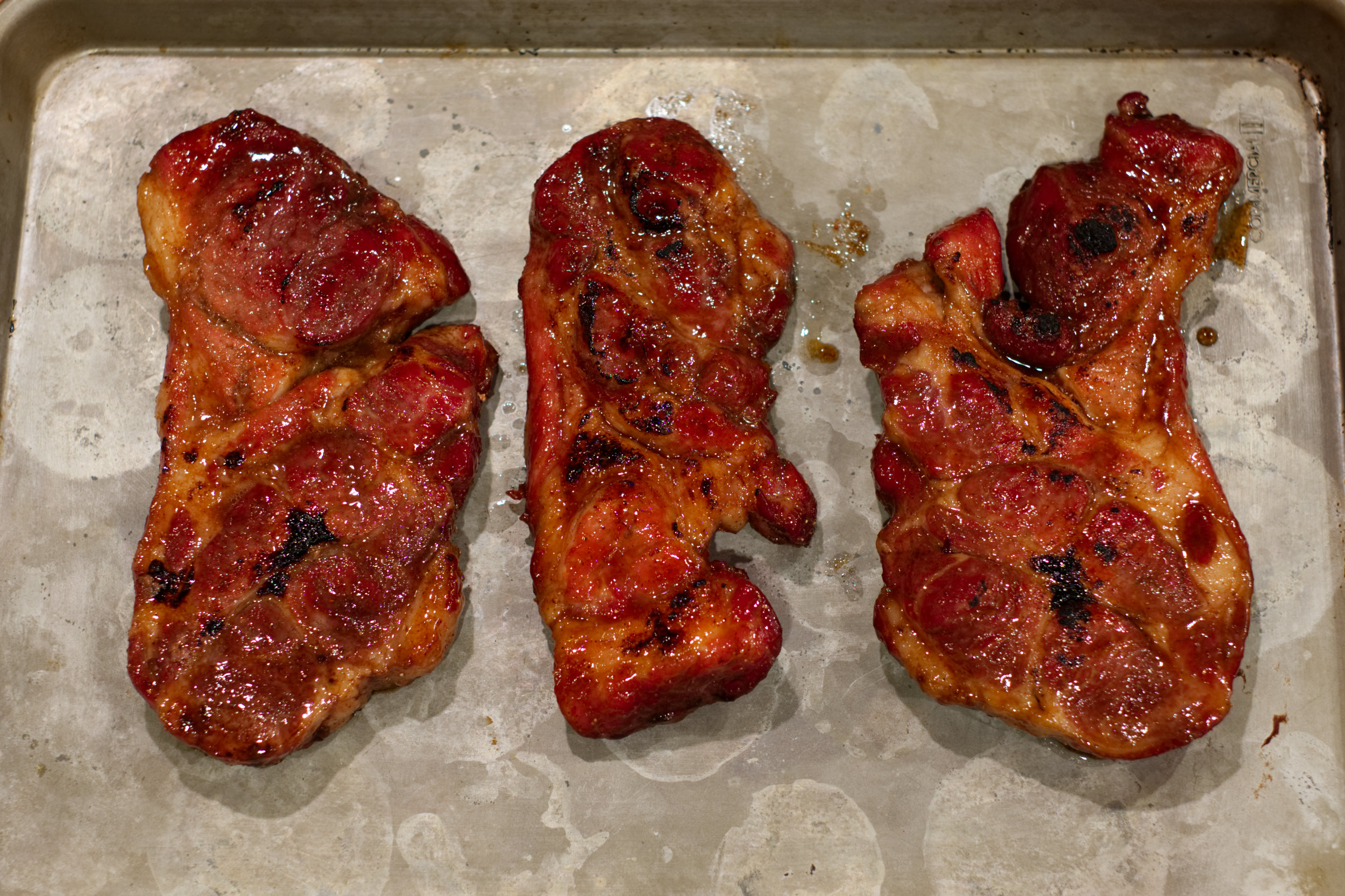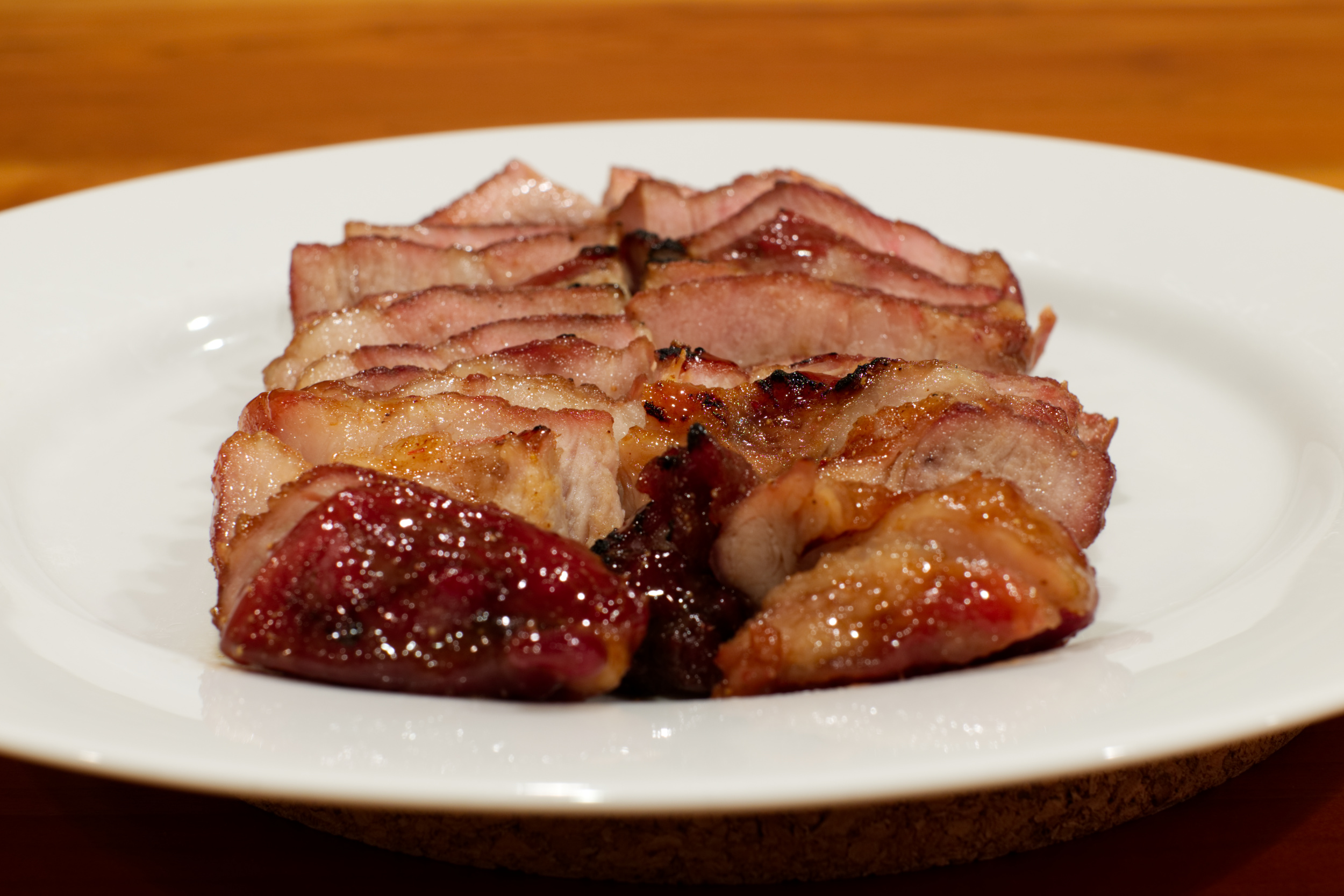Cha siu 叉燒

In the past few years my parents started making cha siu at home after learning about the seasoning from one of the chefs they worked for. One reason why they started making this at home is to control the time that the meat is marinated. In most restaurants and roasting shops, the meat is seasoned overnight in large batches. Many recipes I found online have about 3-4 hours on the very low end, but typically recommend an overnight to 24 hour marinade. This would result in a “stiffer” texture as the salt in the marinade would draw out too much liquid from the meat. This recipe gets the best of both words of seasoning the pork and getting a better texture.
Picking the cut of meat can be a personal choice. Some places use lean pork tenderloin while others may roast using pork shoulder for a more varied cut. My parents don’t like the pork tenderloin because of how lean the cut is, it can get overcooked too easily and be tough and dry. They prefer pork shoulder. This cut is fairly large and has a difference in the front (closer to the neck) and back (towards the tail) ends where the front is fattier and the back is leaner. You can use either side, but my parents prefer the front end for a better balance of fat and meat.
This is how you spot the front side of the pork shoulder. Look for the layered pattern of fat that surrounds some of the meat. You will see much less of this pattern of fat and connective tissue on the back end.
When I was working on recording this recipe a while back, I had my friend Jason Moy come by to take home some of it. We chatted about some of the specific food memories we had growing up and it turns out he had a specific childhood memory with cha siu. I’m grateful that he was willing to share his vivid memory and connection to this dish.
Jason: "I am always amazed at how certain foods have a way of evoking the most powerful memories, and transporting us back to a time when everything seemed much simpler. For me, one of these foods is char siu, or roast pork, from a childhood barbeque shop on Wentworth Avenue and 24th Place in Chicago’s Chinatown. My mom and I would frequently stop by there for groceries after preschool, and though its name escapes me (and the shop is probably long gone by now) I still clearly remember arriving one day just as the char siu had come out of the oven, its heavenly aroma wafting over us to fill the entire store. Upon seeing us, the barbeque chef, or ‘shifu’, waved us over to the counter, and with a twinkle in his eye, handed me a glistening piece of char siu that I still consider one of the best things I have ever tasted; the lacquered glaze on the deep mahagony pork, flecked with just the right amount of char, and the experience of taking that first bite of the tender pork, with the perfect balance of meat and melt-in-your-mouth fat, are as vivid to me as if it happened just yesterday. It’s funny how foods can be time-machines in this way, isn't it? Now, who's hungry?"
RECIPE:
2 lbs pork shoulder, deboned and sliced about 1 in. thick
½ c. sugar
1 tbsp. salt
½ tsp. MSG
½ tbsp. galangal (sand ginger) powder
¼ tsp. Chinese five spice powder
1 ½ to 2 crushed star anise
3 drops red food coloring (optional)
3 drops yellow food coloring (optional)
1 heaping tbsp. mixed sauce (wahn hahp jeung)
In a large bowl, toss all the ingredients except mixed sauce (wahn hahp jeung) and food coloring. Add mixed sauce (wahn hahp jeung) and food coloring and mix until well combined.
Add the pork shoulder and rub to coat seasoning evenly around each piece of pork shoulder. Marinate for 60 to 90 minutes. Halfway between the marination, flip the shoulder and rub the seasoning again to keep it evenly distributed.
Preheat oven to 350F. Line a baking sheet with aluminum foil.
The seasoned pork shoulder at this point will have some liquid drawn from the seasoning. You do not want to roast it soaking wet in the marinade. Wipe excess marinade off the pork into a small saucepan and place the pork on the lined baking sheet. Transfer any remaining marinade to the small saucepan to make a glaze. If you want, you can pick out any pieces of star anise at this point.
Roast for 40-45 minutes or until center reaches 155F. About 20-25 minutes into roasting, flip the meat.
Meanwhile, over medium heat bring the marinade to a boil. You will need to monitor this and stir it with a whisk or wooden spoon to prevent burning. Once the marinade reaches a boil, turn the heat down to medium-low to low to reduce for about 5 minutes and set aside.
When the pork is finished roasting, transfer it to a clean lined baking sheet and let it rest for at least 10 minutes, reserving the liquid in the sheet. Add all the roasting liquid to the small saucepan with reduced marinade and bring this back to a boil over medium heat. Reduce over medium to medium low heat while stirring/whisking to prevent burning until the glaze has thickened.
Lightly baste once side of the rested cha siu with the glaze and broil until it sears a little. Flip and do the same to the other side. Slice up and enjoy! This freezes pretty well too so don’t worry about making a large batch.










